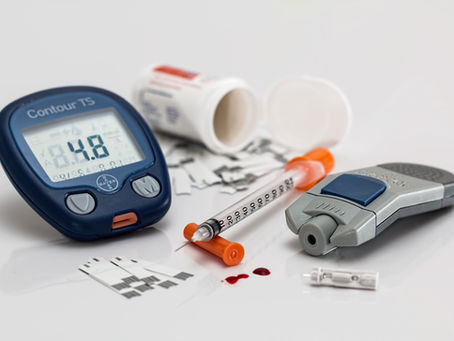
Celebrating 100 Years of Insulin
January is a month for new beginnings, reflection, celebration, and renewed commitments to our collective health. For people with diabetes, this January is especially significant – January 11th, 2022 will mark the 100th anniversary of the first insulin injection in a human. As many of our clients are diabetics, Libertana recognizes the magnitude of this discovery. Join us in celebrating this centennial milestone as we explore the history of insulin and its impact on society.

Despite the relatively recent medical breakthroughs in diabetes treatment, the disease was discovered in ancient Egypt and the term, “Diabetes”, was coined by the Greek physician Aretaeus of Cappadocia in the 2nd century. He noted that one of the symptoms of diabetes was constant urination, and named the disease after the Greek word for “siphon”.
Since its discovery and prior to the discovery of insulin, people diagnosed with diabetes were given weeks or even just days to live. Some patients survived for a few months, or, in rare cases, a year. However, diabetic ketoacidosis (DKA) was the inevitable outcome for patients, which would eventually lead to premature death.
The best pre-insulin treatments doctors offered consisted of diet alteration. Doctors prescribed patients a variety of very strict diets with minimal carbohydrate intake. While dieting did improve many patients’ quality of life and provided a few extra years, diabetes would still eventually claim their lives. In some circumstances, extreme dieting caused diabetics to die of starvation rather than the disease.
Pre-insulin history emphasizes the significant role insulin has played in modern medicine. A few key discoveries in the late 19th and early 20th centuries changed the world’s understanding of diabetes. In 1869, Paul Langerhans discovered specialized cells in pancreatic tissue, which were later determined to produce insulin. Twenty years later, Oskar Minkowski and Joseph von Mering discovered that removing a dog’s pancreas provoked symptoms of diabetes and led scientists to the source of diabetes. Finally, Sir Edward Albert Sharpey-Schafer suggested only one chemical was missing from the pancreas in people with diabetes. He named the chemical insulin, which comes for the Latin word insula, meaning “island.”
These discoveries set the stage for insulin’s application as a medical treatment. In 1921, Frederick Banting and Charles Best figured out how to remove insulin from a dog’s pancreas. Less than a year later on January 11th, 1922, Leonard Thompson (a 14-year-old boy dying from diabetes) became the first person to receive an injection of insulin. The monumental breakthrough led to Banting and Best winning the Nobel Prize in 1923. Insulin was soon mass produced and distributed globally.
Although insulin is not a cure for diabetes, it’s effectiveness as a treatment makes it one of the most significant discoveries of the last century. At Libertana, we hope to witness many medical victories this year that improve the quality of life for our clients. From our family to yours, we wish you a happy, healthy 2022.

